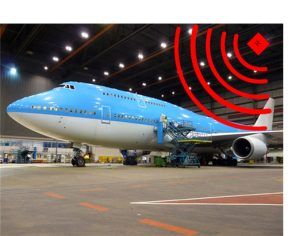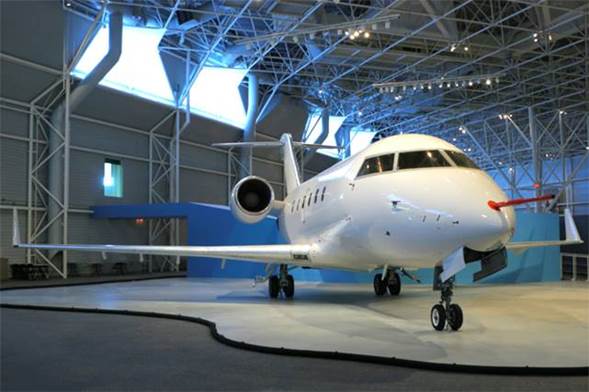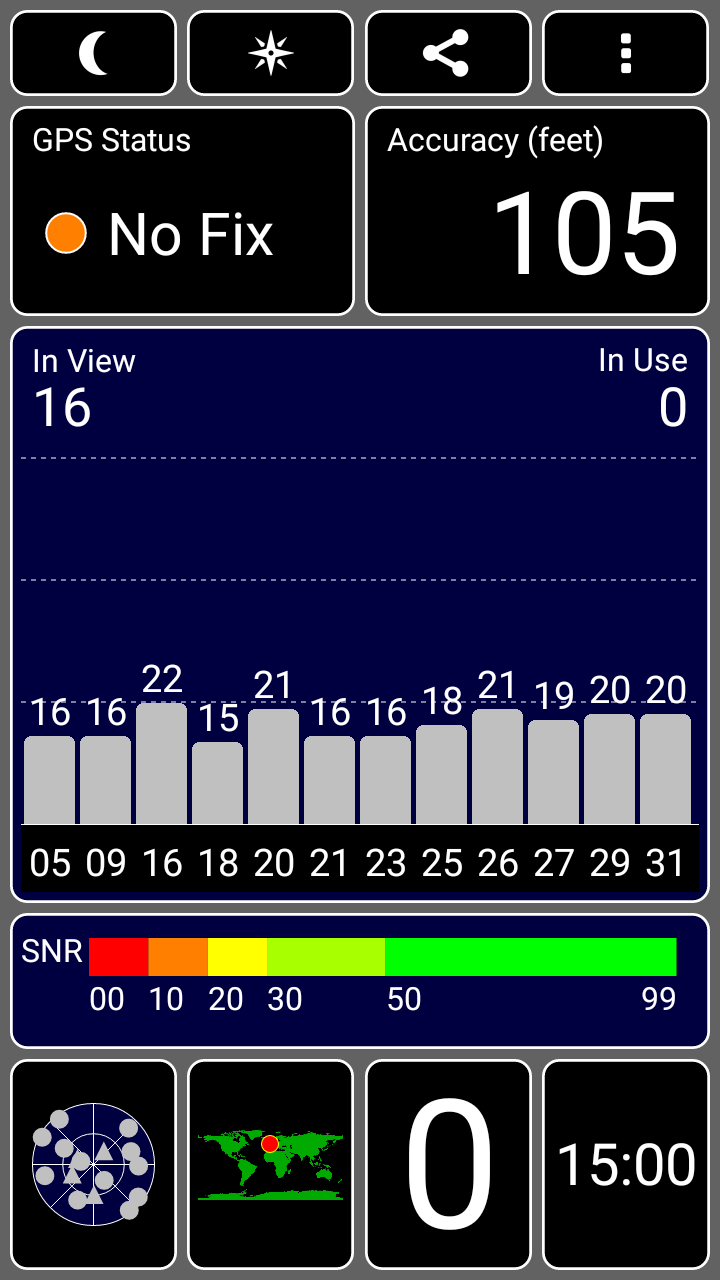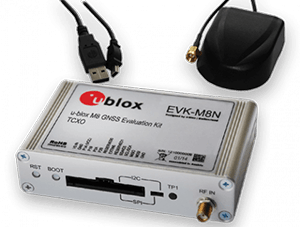Installing a GPS repeater in a hangar
A GPS repeater can provide signal inside a hangar where it is not normally available.
This allows avionics equipment to be tested indoors – no need to open the doors, let the cold air in and push the aircraft outside.
Benefits of a GPS repeater in a hangar

Hangar structure is completely enclosed with no windows or roof lights
Because signals are weak after travelling 12,500 miles from the satellites, the building structure can block or reflect GPS signals and prevent them from entering the hangar.
Avionics maintenance tasks can entail pushing the aircraft outside to achieve a GPS fix.
A repeater system overcomes the physical obstruction caused by the structure.
There’s a receiving antenna outside – preferably at the highest part of the building with good sky view.
A coaxial cable transfers the signal indoors, and a repeater unit re-radiates the signal to where it’s needed.
A single repeater can cover an area of 35-40m diameter when mounted in a ceiling at 10m height.
However,
Some hangar roofs have skylights or large ceiling-to-floor side windows, so that some “natural” signal can enter.

Large side windows may let signal inside the hangar
The indoor signal strength/quality can vary a lot throughout the day as satellites traverse the skies above.
Sometimes a good signal is available and nav devices will achieve a good 3D fix.
At other times the angle of the satellites compared to the skylights/windows won’t be right.
A repeater can provide a constant indoor signal because it has an outdoor antenna which is fixed in a place where it gets a steady, constant signal.
It may be expected that a repeater will “overpower” any naturally occurring signal to provide a constant working signal indoors.
It doesn’t always work out that way due to the repeater’s upper power limit.
To prevent potential wireless interference situations, the repeater maximum power output is limited by ETSI to 0.000001mW (-60dBm).
Here’s why: see para 2.5 in this Ofcom document
When “natural” signal and repeated signal are both present indoors, it is possible that GPS receivers on the aircraft can’t lock on to either of them – hence they don’t get a GPS fix at all.
If the hangar is a signal dead-zone, i.e. little or no live signal is entering, then a repeater is ideal.
Conclusion
The success of a repeater installation can be compromised by the presence of “natural” signal entering through open doors, windows and skylights, and mixing with repeated signal.
Resources

Weak GPS signal level recorded by “GPS Test” app for Android
The signal levels in a building can be measured using a suitable meter.
A fairly basic, free app for Android devices called “GPS TEST” is useful and can be downloaded here.
This gives a visual representation of the number of satellites in view, and their relative signal strengths.

u-blox EVK-8MN evaluation kit
A more highly-featured solution is available from u-blox, a company specialising in positioning and location based applications.
An evaluation kit (EVK) has a small GNSS patch antenna that connects to the GNSS receiver module, and outputs GNSS data to u-blox software u-center.
Contact FalTech to discuss your situation or call 01326 336 444.
Need help with your installation?
Or call us on
